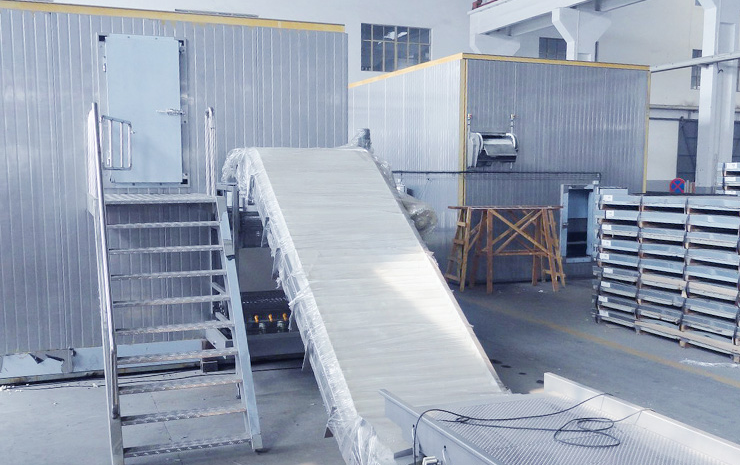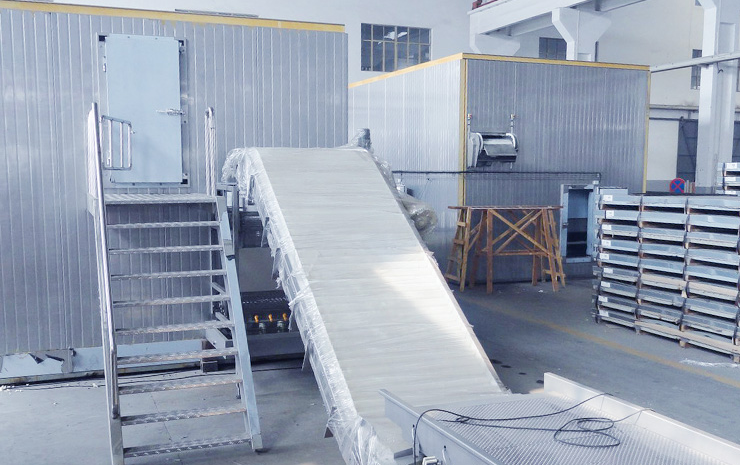In modern industrial production, especially in food processing, biomedicine, and chemicals, the quick-freezing process has become a key technique for ensuring product quality and extending shelf life. As a company with years of experience in the refrigeration industry, CBFI understands the importance of selecting the right engineering quick-freezing equipment. It not only affects production efficiency but also directly impacts the final product quality and the company’s economic benefits.
So, what are engineering quick-freezing devices?
Engineering quick-freezing equipment, unlike small or household freezing devices, typically refers to large-scale quick-freezing machines used in industrial production.
Depending on different freezing methods and application scenarios, they can mainly be divided into the following categories:

The tunnel freezer operates on a continuous working mode, with products passing through the pre-cooling zone, freezing zone, and unloading zone via a conveyor belt.
The core advantages of this device are its large processing capacity and high automation level, making it suitable for large-scale, continuous production demands.
Typical applications include quick-freezing of cut meats, poultry, dumplings, rice balls, and other products.

The spiral freezer features a compact design, achieving a larger processing capacity in a limited space.
The products are conveyed via a spiral conveyor belt and frozen in a closed-loop air circulation system.
This device is particularly suitable for factories with limited space and is widely used in freezing seafood, poultry products, and some prepared foods.
The plate freezer utilizes direct contact conduction through metal plates for efficient freezing. Products are in close contact with low-temperature plates to achieve rapid cooling.
The advantages of this device are its fast freezing speed and the high flatness and quality of the products after freezing.
It is commonly used for quick-freezing high-value products such as premium ready-made meals and finely processed meats.

The fluidized bed freezer uses powerful vertical airflows to blow products into suspension, quickly freezing them in a low-temperature air flow. It is especially suitable for quick-freezing granular or small-sized materials (IQF).
Its main feature is a very fast freezing speed, preventing product sticking together and maintaining a good individual state.
This device is commonly used for freezing beans, corn, berries, small-sized meats, and seafood.
The liquid nitrogen freezer uses the extremely low temperature of liquid nitrogen (-196°C) to achieve rapid freezing. Its freezing speed far exceeds that of conventional mechanical refrigeration devices.
This device is suitable for high-end ingredients that require high freezing quality, such as premium seafood and rare fruits, preserving the product's taste, color, and nutritional content to the maximum extent.
As a professional refrigeration equipment manufacturer, CBFI not only provides the above-mentioned high-performance engineering quick-freezing devices but also focuses on providing clients with comprehensive technical support and customized solutions.
Our service process includes:
The selection of engineering quick-freezing devices is a complex system engineering that requires comprehensive consideration of multiple factors.
With years of industry experience and a professional technical team, CBFI is dedicated to providing customers with efficient and energy-saving quick-freezing solutions.
We believe that through scientifically rational equipment selection and professional technical support, we can help enterprises improve product quality, increase production efficiency, reduce operating costs, and gain an edge in the competitive market.
If you have any demands or questions regarding engineering quick-freezing equipment, feel free to contact CBFI. We are dedicated to serving you.